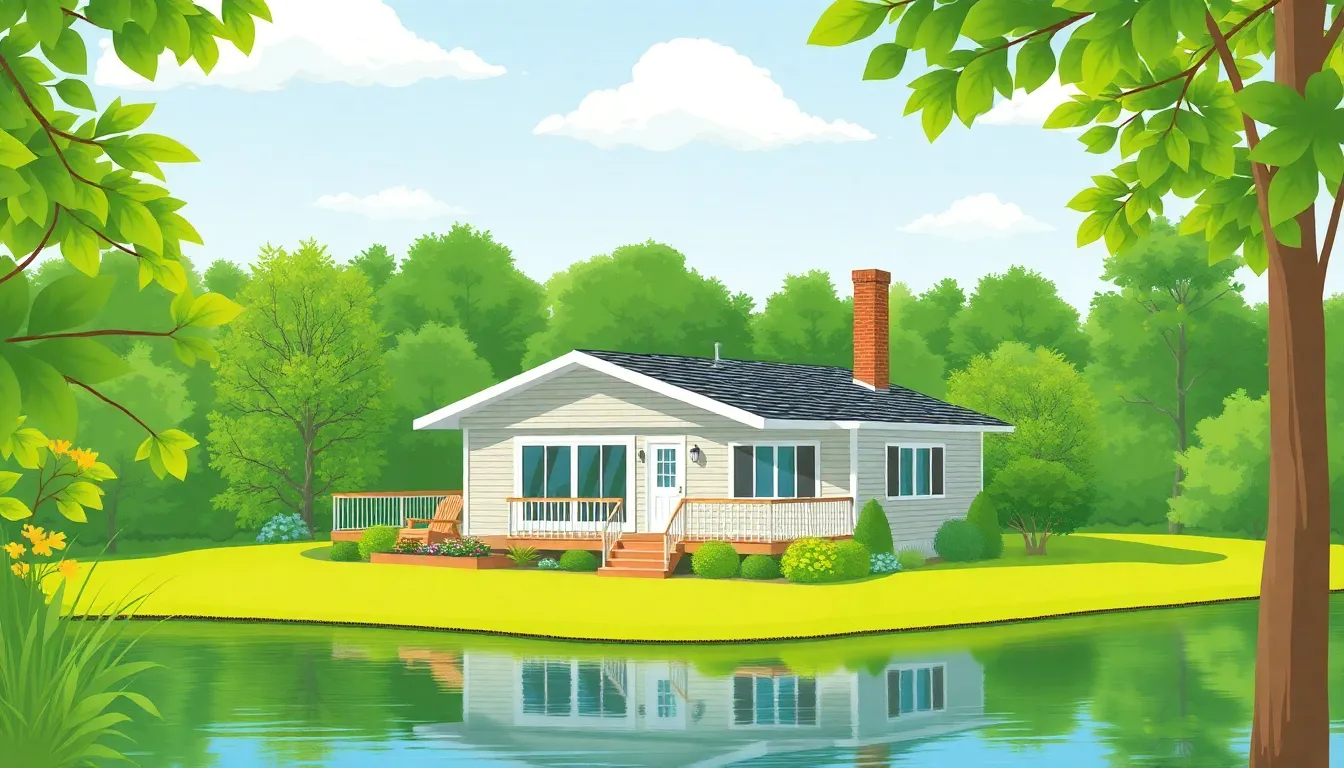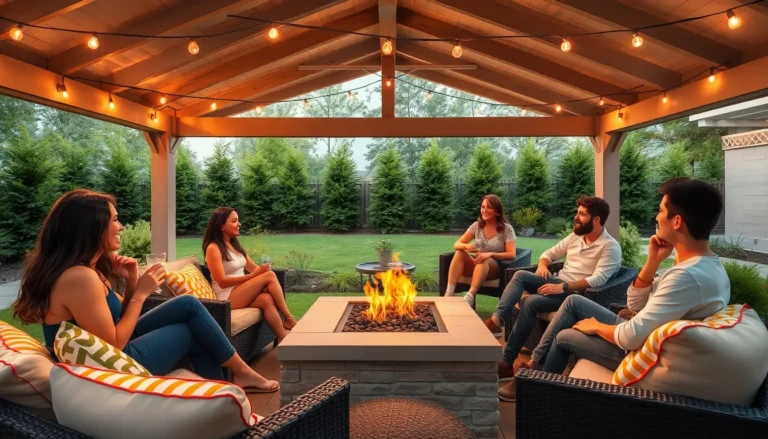Table of Contents
ToggleOwning a secondary home is like having a slice of paradise, but it comes with its own set of challenges. Imagine lounging by the lake or sipping coffee on your mountain deck while worrying about what happens if a raccoon decides to throw a party in your absence. That’s where secondary home insurance swoops in like a superhero, ready to save the day (and your property) from unexpected disasters.
Whether it’s a cozy cabin or a beachside bungalow, protecting that getaway is crucial. After all, you wouldn’t want to return from a relaxing vacation only to find your dream home turned into a horror story. With the right coverage, you can enjoy your slice of heaven without the nagging worry of what ifs. Let’s dive into the essentials of secondary home insurance and discover how it can keep your dream retreat safe and sound.
What Is Secondary Home Insurance?
Secondary home insurance safeguards properties that serve as vacation homes or seasonal residences. Traditional homeowners insurance often doesn’t cover the unique risks associated with secondary homes. This type of insurance addresses the property’s specific needs, ensuring adequate protection against potential damages or liabilities.
Coverage typically includes protection from theft, natural disasters, and accidental damages. Policies might differ between states or insurance providers, so it’s essential to understand the specific terms. Heed the advice of insurance agents to clarify what is and isn’t included in a particular policy.
In many cases, lenders may require secondary home insurance when financing, as it protects their investment. Without this coverage, homeowners face significant financial loss in case of unforeseen events. Researching the local market helps identify the best options available for secondary homes.
When obtaining secondary home insurance, consider features such as replacement cost coverage. This can provide compensation based on the property’s current value, not the original purchase price. Review your policy annually to ensure it aligns with any changes in the property’s value or personal circumstances.
Homeowners are encouraged to compare multiple quotes to find the most suitable coverage. Adjustments in deductibles, limits, and coverage options can significantly impact premium costs. Engaging with various insurers allows homeowners to make informed decisions that protect their investment effectively.
Importance of Secondary Home Insurance

Secondary home insurance plays a crucial role in safeguarding vacation properties. This coverage protects against various risks unique to secondary homes.
Protecting Your Investment
Securing an investment requires more than just ownership. Secondary home insurance provides financial protection against potential damages, ensuring property owners don’t face overwhelming repair costs. It’s essential for covering damages that occur when the owner is absent. A report indicates that 57% of secondary homeowners experience some form of damage, reinforcing the need for proper insurance. This type of coverage also adds a layer of security for lenders, as it safeguards their financial investment. In cases of theft or natural disasters, homeowners can restore their properties with confidence if they have adequate insurance in place.
Coverage Specifics
Coverage specifics vary by policy and provider. Many secondary home insurance plans offer protection against theft, vandalism, and certain natural disasters, which traditional home insurance may exclude. Policies often include liability protection, covering injuries sustained by guests on the property. Homeowners benefit from understanding replacement cost coverage, which can significantly affect financial outcomes in the event of a claim. Annual policy reviews help identify adjustments in coverage needed to match current property values and risks. By comparing multiple quotes, homeowners can discover tailored options that ensure complete protection for their secondary homes.
Types of Secondary Home Insurance
Secondary home insurance varies based on property usage. Understanding these types ensures adequate coverage for unique needs.
Vacation Homes
Vacation home insurance protects properties not used as primary residences. This type of coverage typically includes protection against natural disasters, theft, and vandalism. For instance, many policies cover damages from fire, wind, or flooding. Homeowners can tailor coverage with options for personal property and liability. Some policies provide replacement cost coverage, ensuring that owners receive appropriate compensation for lost or damaged items. Review annual policies to maintain adequate protection against evolving risks. This type of insurance allows owners to enjoy their vacation homes without worrying about potential financial losses.
Rental Properties
Rental property insurance addresses risks associated with leasing secondary homes. Coverage generally includes protection against property damage and liability claims from tenants. Many policies offer specific features like loss of rental income, which provides financial support if tenants do not occupy the property due to damages. Enhancing coverage may include protecting furnishings if the property is rented furnished. Understanding state regulations is crucial, as insurance requirements can vary. Owners should evaluate potential risks and adjust their policies accordingly to safeguard investments effectively. This type of insurance ensures financial stability while managing rental properties.
Factors to Consider When Choosing Secondary Home Insurance
Selecting the right secondary home insurance involves evaluating multiple critical factors. Understanding these elements ensures complete protection for vacation properties.
Location and Environment
Location greatly impacts insurance costs and coverage options. Properties situated in areas prone to natural disasters, such as floods or wildfires, typically require additional coverage. The risk assessment by insurers adjusts premiums based on local crime rates as well. For instance, a secondary home in a remote mountain area may face different risks compared to one near the coast. Seasonal weather patterns should influence policy choices, as varying climates affect potential damages. Understanding local regulations can also help in navigating insurance options effectively.
Property Value and Type
Property value directly affects the coverage limit homeowners select. Higher-value properties mandate comprehensive coverage to protect against significant financial loss. For instance, a luxury vacation home requires more extensive policies compared to a modest cabin. The type of property also plays a role in determining coverage needs. Rental properties will necessitate different coverage details, including liability for tenant injuries and loss of rental income. Adjustments in coverage based on property type ensure homeowners manage risks appropriately and secure their investments. Regular assessments of property values allow for timely updates to insurance policies.
Investing in secondary home insurance is essential for protecting valuable vacation properties. This coverage not only safeguards against unexpected damages but also provides peace of mind for homeowners who wish to enjoy their retreats worry-free. By understanding the unique risks associated with secondary homes and tailoring insurance policies accordingly, owners can ensure comprehensive protection.
Regularly reviewing and comparing policies helps homeowners find the best coverage options that suit their specific needs. With the right insurance in place, property owners can confidently embrace the joys of their secondary homes, knowing they have taken the necessary steps to secure their investments.




